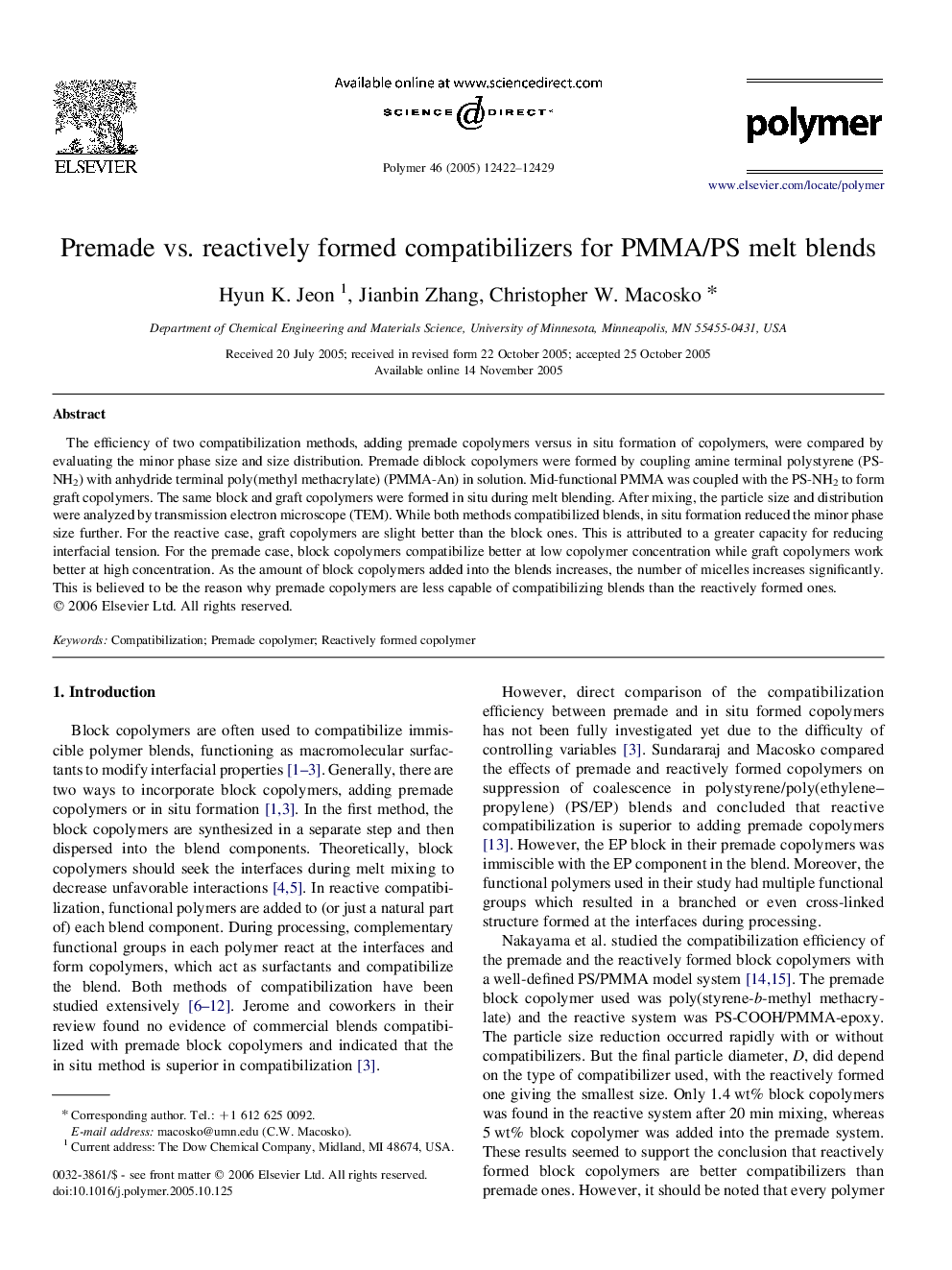| Article ID | Journal | Published Year | Pages | File Type |
|---|---|---|---|---|
| 5189643 | Polymer | 2005 | 8 Pages |
Abstract
The efficiency of two compatibilization methods, adding premade copolymers versus in situ formation of copolymers, were compared by evaluating the minor phase size and size distribution. Premade diblock copolymers were formed by coupling amine terminal polystyrene (PS-NH2) with anhydride terminal poly(methyl methacrylate) (PMMA-An) in solution. Mid-functional PMMA was coupled with the PS-NH2 to form graft copolymers. The same block and graft copolymers were formed in situ during melt blending. After mixing, the particle size and distribution were analyzed by transmission electron microscope (TEM). While both methods compatibilized blends, in situ formation reduced the minor phase size further. For the reactive case, graft copolymers are slight better than the block ones. This is attributed to a greater capacity for reducing interfacial tension. For the premade case, block copolymers compatibilize better at low copolymer concentration while graft copolymers work better at high concentration. As the amount of block copolymers added into the blends increases, the number of micelles increases significantly. This is believed to be the reason why premade copolymers are less capable of compatibilizing blends than the reactively formed ones.
Keywords
Related Topics
Physical Sciences and Engineering
Chemistry
Organic Chemistry
Authors
Hyun K. Jeon, Jianbin Zhang, Christopher W. Macosko,
